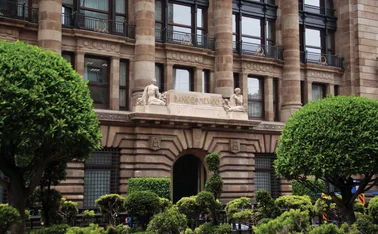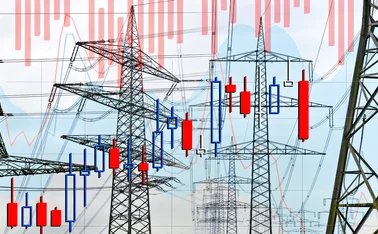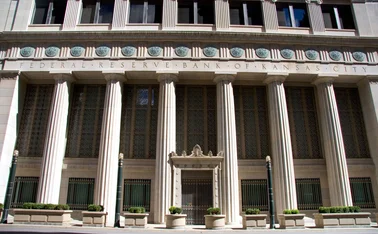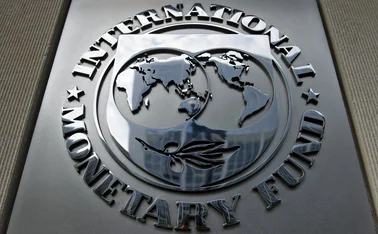
Dispelling the gloom of globalisation slowdown
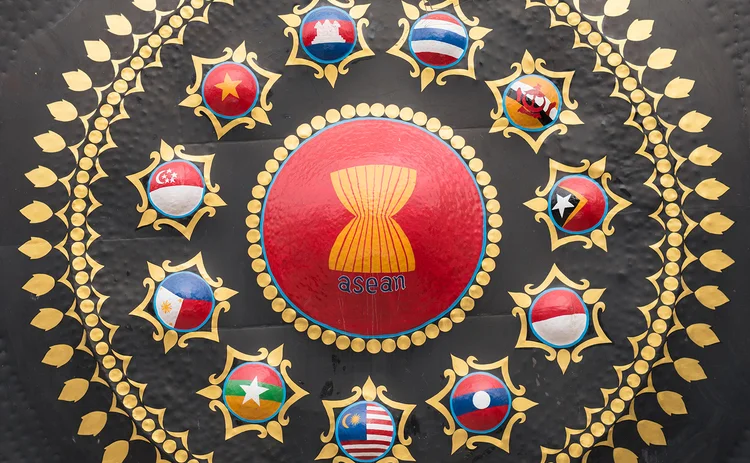
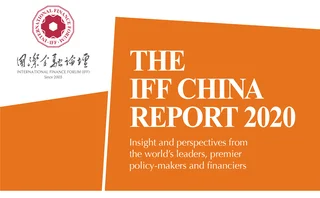
The world economic landscape is currently experiencing profound and complex changes. The past two years have been some of the most unstable and uncertain ever for global economic development, and economic and trade patterns have undergone deep adjustments.
Economic globalisation is slowing down: the International Monetary Fund (IMF) projected global growth to rise from an estimated 2.9% in 2019 to 3.3% in 2020 and 3.4% for 2021. Global trade is also losing momentum – accounting in 2017 for 22.5% of global GDP, compared with 28.1% in 2007. Its growth rate is moderating too – noticeably higher than the growth rate of the world economy, but now flat. The global Purchasing Managers’ Index has fluctuated around the 50 mark since May 2019, and the World Trade Organization (WTO) lowered its expectation on the growth of global trade in goods to 1.2% – the lowest since 2016.
Meanwhile, tussles in the international economic and trade arena are becoming more frequent and intense. China–US economic and trade frictions are increasing – as are dispute settlement cases on antisubsidy investigations initiated by WTO members and at the China International Economic and Trade Arbitration Commission, where the number of economic and trade disputes has grown 30% year on year.
There has also been a shift towards decentralisation. Rising protectionist sentiments pose unprecedented challenges to the current multilateral trade system, while WTO members have failed to achieve an agreement on how to conduct reform, and even which aspects of its role require it. Major economies move faster to sign bilateral trade agreements, which will clearly lead to a more decentralised trade situation.
The force awakens
In such a landscape, it is important to explore the role of the Belt and Road Initiative (BRI) as a new driving force toward global growth. How do we promote the regulatory and project management of BRI to enhance infrastructure construction and secure the stable and sustainable development of economies in general – and finance in particular?
The BRI is a major international co‑operation initiative, planned, deployed and promoted by President Xi Jinping. Over the past six years, China has signed 200 co‑operation agreements with 138 countries and 30 international organisations as at January 2020. All BRI participants, following the guideline of wider consultation, joint contribution and shared benefits, have established a vibrant and open system for joint decision-making and collaborative work. This system, in return, directly stimulates investment and trade growth in the relevant countries and regions. Here is a chance to inject a new driving force into the current gloomy world economy.
Since 2013, China’s accumulated direct investment has exceeded US$100 billion, and the value of import and export to BRI countries reached $7.47 trillion. From January to October 2019, the growth of imports and exports to BRI countries was 9.4% – the fastest among all regions, accounting for 29.1% of China’s total foreign trade volume. A World Bank report, Belt and Road economics – Opportunities and risks of transport corridors, estimates that “trade will grow from between 2.8% and 9.7% for corridor economies and between 1.7% and 6.2% for the world”, and that “increased trade is expected to increase global real income by 0.7% to 2.9%, not including the cost of infrastructure investment”.
Building on current achievements and divining how to continue the high-quality development of the BRI to benefit the international community and world citizens remains a crucial topic for all stakeholders.
First, the core principles must be firmly upheld – wide consultation; joint contribution and shared benefits; and connectivity in policy, infrastructure, trade, finance and people – as reinforced and elaborated on by President Xi at home and abroad. One-way communication is not viable – these principles emphasise the input of stakeholders and the importance of decisions being delivered after joint discussions. Every participant should make full use of their strengths and capabilities to achieve mutual benefits and win-win outcomes through bilateral, trilateral or multilateral co‑operation.
Closer connections should also be established in five major areas:
- Policy – to enhance intergovernmental co‑operation
- Infrastructure – including hardware as well as other connections
- Trade – the starting point and the most fundamental area
- Finance – the lifeblood of the modern economy
- Connectivity of people – among whom openness and understanding of inclusiveness lie.
There is also a need to continuously promote the construction of mechanisms and platforms. Domestic development and co‑operation schemes should be co‑ordinated with those of the UN, the Association of Southeast Asian Nations (ASEAN), the African Union, the European Union, the Eurasian Economic Union and other international and regional organisations, as well as the development strategies of specific countries. Multilateral co‑operation mechanisms – including the Group of 20; the Asia-Pacific Economic Cooperation; the Shanghai Cooperation Organisation; the China–ASEAN Investment Cooperation Fund; the Forum on China–Africa Cooperation; the China–Arab States Cooperation Forum; the China and the Community of Latin American and Caribbean States Forum; and Cooperation between China and Central and Eastern European Countries, known as ‘17+1’ – should be used as forums for stakeholders to engage further in policy co‑ordination to safeguard multilateralism and free trade.
Platforms for intergovernmental policy dialogues – including the Belt and Road Forum for International Cooperation and the China International Import Expo – are also improving quality and efficiency to more rapidly achieve consensus among parties and facilitate the physical outcomes of
collaborative work.
Priority must be given to constructing infrastructure and laying the foundations for connection, co‑operation and development. Currently, the majority of investment in the BRI is allocated to infrastructure construction and building the framework, proposed by President Xi at the second Belt and Road Forum for International Cooperation in April 2019, of “six corridors, six routes serving multiple countries and ports”.
So far, the China–Europe Railway Express has taken almost 20,000 trips through 16 foreign countries and 53 cities. It has the potential to unlock Asia–Europe land logistics and trade routes, and transform production and trade patterns.
A pincer approach
The multilateral trade system represented by the WTO and the regional trade schemes epitomised by free-trade agreements (FTAs) are the two driving forces of economic globalisation. A two-pronged approach should be adopted here. On one side, China will support and actively participate in WTO reform, uphold majority rule and commit to narrowing the worldwide development gap. On the other, China should proactively negotiate and sign FTAs, increasing its tally of 16, and encouraging enterprises to use them more frequently, giving full rein to promoting favourable policies.
The Regional Comprehensive Economic Partnership – potentially the world’s largest economic bloc – is expected to be signed and to take effect soon. It will establish a free-trade area with the largest population, the most diverse membership and the most potential for development. More high-level FTAs are also brewing within BRI participating countries.
With the growing penetration of the BRI into the rest of the world, demand is gradually increasing: for infrastructure construction, trade and investment, industrial project co‑operation, cross-border payment and settlement, and other financial services.
China should not only take advantage of international financial institutions, development financial institutions and policy banks, but also motivate commercial financial institutions to expand funding resources. A multifaceted financial services system should be established, including development, industrial, trade, cross-border and internet financing, to ensure the sustainability of commercial and fiscal financing.
Meanwhile, China should make full use of direct financing, upgrade the connectivity of capital markets, create new financial instruments and develop more inclusive insurance and financial derivatives to meet the various demands of risk management regulation. Cross-border financial supervision and credit co‑operation should also be fortified to ensure the financial security system is stable, sustainable and risk-controllable.
Improving publicity and increasing trust to gain support and confidence from the public will also be crucial for the success of the BRI. Over the past six years, China has established dozens of economic and trade co‑operation parks in BRI countries. It has also generated more than 300,000 local job positions and tax revenues of more than $2.7 billion for the host countries. Many enterprises have enhanced economic and social development in culture, education, healthcare, sanitation, people-to-people exchange and charities. The BRI is not just an economic policy – it is one that inspires people to live better lives.
However, some countries still have doubts about the BRI, with some even regarding it a geopolitical tool and a debt trap. Ancient Chinese wisdom values the soft power of public diplomacy, believing mutual trust holds the key to further expansion of the BRI. It is necessary to disseminate the success stories and progress made to dispel bias and hatred, and create a more welcoming environment.
Last, but not least, we must ensure enterprises’ behaviour complies with local regulations, improving domestic business environments and accelerating soft infrastructure construction. Regulation, industrial policies, market basis, culture and custom vary significantly in different countries, so China should establish a well-structured early warning system. It should also provide risk evaluation, a legal service directory and other necessary information for enterprises, as well as supervise enterprises’ overseas behaviour and encourage them to abide by law, regulations, ethics and moral standards.
Export control should also come under the Chinese government’s remit. Enterprises should be mandated to undergo security checks, abide by unfair competition controls, anti-bribery laws and other risk management provisions. The government should also mobilise professional agencies to provide services, including legal consulting, credit investigation, arbitration and mediation, patent and trademark commissioning, intellectual property protection and antitrust claims. Meanwhile, customs, taxation, certification and other competent departments must implement and co‑ordinate the established agreements to avoid repeated work.
Only users who have a paid subscription or are part of a corporate subscription are able to print or copy content.
To access these options, along with all other subscription benefits, please contact info@centralbanking.com or view our subscription options here: http://subscriptions.centralbanking.com/subscribe
You are currently unable to print this content. Please contact info@centralbanking.com to find out more.
You are currently unable to copy this content. Please contact info@centralbanking.com to find out more.
Copyright Infopro Digital Limited. All rights reserved.
You may share this content using our article tools. Printing this content is for the sole use of the Authorised User (named subscriber), as outlined in our terms and conditions - https://www.infopro-insight.com/terms-conditions/insight-subscriptions/
If you would like to purchase additional rights please email info@centralbanking.com
Copyright Infopro Digital Limited. All rights reserved.
You may share this content using our article tools. Copying this content is for the sole use of the Authorised User (named subscriber), as outlined in our terms and conditions - https://www.infopro-insight.com/terms-conditions/insight-subscriptions/
If you would like to purchase additional rights please email info@centralbanking.com
Most read
- ECB says iPhone is currently incompatible with digital euro
- Supervisors grapple with the smaller bank dilemma
- ‘Do I die, or do I survive?’ Officials reflect on Basel III complexity


